List of 21 Partners
Meet the different partners that make up the CiViQ consortium, partner that are located all around Europe:

Meet the members of the CiViQ consortium
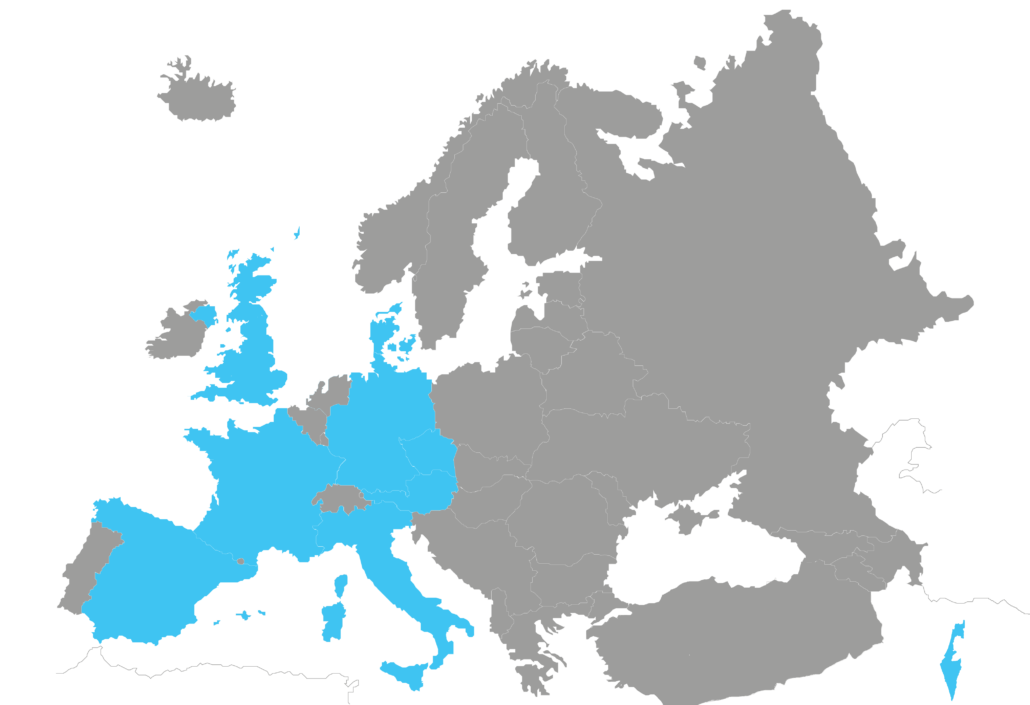
Meet the different partners that make up the CiViQ consortium, partner that are located all around Europe:

ICFO will coordinate the project (WP1) and contribute to other technical activities (WP 3, 5, 6, 8 and 9). With regard to the project’s technical tasks, ICFO`s team has made contributions to quantum key distribution and random number generation, especially device independent and laser phase diffusion schemes. As a result the team has published in high impact journals (Nature family and Optica, for example) and generated key patents, leading to the lunch of the spin-off Quside.
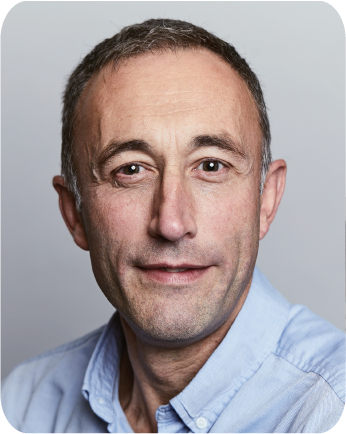
Valerio Pruneri, project coordinator for CiViQ, is an ICREA Industrial Professor, Corning Inc. chair and group leader at ICFO. Previously he worked in industry, Avanex Corporation, formerly Corning OTI and Pirelli Optical Technologies. He has over 50 granted or pending patent families, 100 invited talks at major international conferences in the field of photonics, optical materials, multifunctional surfaces and quantum technologies, an h-index of 58 (Google Scholar). His research at ICFO has so far contributed to three spin-offs (www.quside.com, www.sixsenso.com and www.luxquanta.com) and numerous industrial collaborations with Corporates. For his research and technology transfer effort, he received the Philip Morris Prize, the Pirelli Research Fellowship, the IBM Faculty Award, the Paul Ehrenfest Best Paper Award, the Duran Farell Prize and the Corning Inc. Chair.

Antonio Acin is an ICREA Professor at ICFO. He got his PhD from University of Barcelona in 2001. After a post-doc in the group of Nicolas Gisin at the Group of Applied Physics, University of Geneva, he joined ICFO in 2003 where he leads the Quantum Information Theory group. Acin has published more than 160 articles in peer-reviewed journals and given more than 100 invited talks in international events. Acin’s research group activity focuses on quantum information theory, with an emphasis on quantum communication and cryptography, but covers other areas such as quantum optics, foundations of quantum physics, condensed matter physics or quantum thermodynamics. He has made pioneering contributions to the development of the device-independent scenario, in particular for cryptography and randomness generation. Acin’s research has been awarded with 3 grants from the European Research Council (1 Starting, 1 Proof-of-Concept and 1 Consolidates grant) and an AXA Chair in Quantum Information Science.
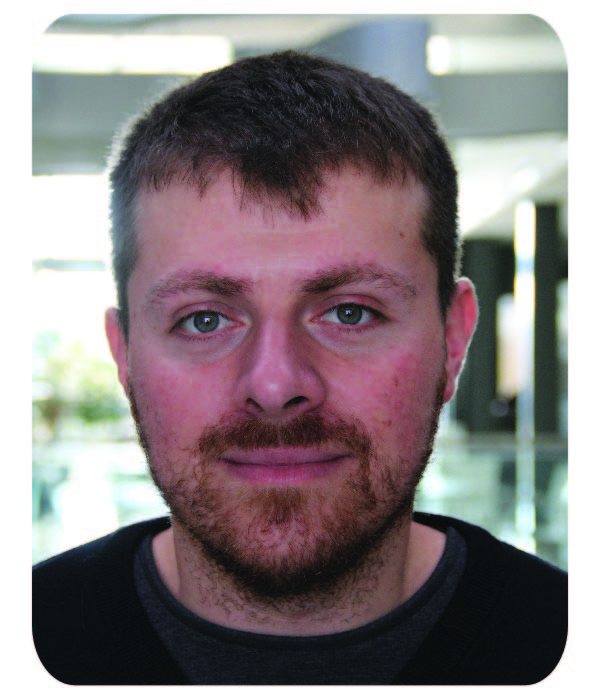
Sebastián Etcheverry is a postdoctoral researcher in the Optoelectronics group at ICFO. He completed his PhD in Applied Physics in 2017 at the Royal Institute of Technology (KTH), Sweden. He has worked on high-dimensional quantum key distribution, experimental tests of quantum contextually, and tomography of quantum states. Besides, during his PhD, he developed optical fiber technologies for electro-optic modulation and life-science applications. He has published 13 articles in peer-reviewed journal among which 2 were published in Physical Review letters, 1 in Optica, and 2 in Nature Scientific. Report. He has presented in 9 international conferences and submitted one provisional patent. Etcheverr’s current research at ICFO focuses on development a system of quantum cryptography based on continuos-variables.

Nuria Charles – Harris (ICFO- Coordinated Project Manager). She has a degree in Business Administration from Universitat Pompeu Fabra, Spain and a Master degree in e-Logistics and Supply chain management, from Universitat Politècnica de Catalunya and Universitat de Barcelona, Spain. Before working in ICFO, she started her career as Engineer Programme Manager in the Fundació Politecnica de Catalunya, later on she became a Logistics Project Manager in Logistics department. She has 4 years experience in International and national projects management in Fundació Clínic per a la Recerca Biomédica. In 2014 she started to work at ICFO in the projects unit in charge of international coordinated projects. She will coordinate the project activities, manage the administrative task, work plan and reportings as well ensure the smooth flow of information between partners and the EC. Together with the Coordinator, she will coordinate the core task and guarantee the quality of CiViQ.

Alina Hirschmann (PhD, Science communication officer at ICFO). She obtained a double B.Sc. degree in Physics and Astrophysics from Florida Institute of Technology- FloridaTech. In 2009, she obtained her PhD degree in Astrophysics from the UPC (Barcelona) through the Institute of Space Studies of Catalonia (IEEC). She has focused her career in Science Communication, position that she has held since 2009. In 2018, she obtained a master degree in Communication Maganmente from the University Pompeu Fabra (UPF). She is currently the Science Communication officer at ICFO and, for CiViQ, will be coordinating the Communication and Dissemination actions of the project.
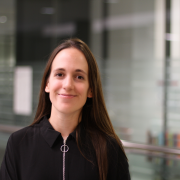
Marta Martín (Science Communication officer at ICFO) holds a BSc in Environmental Biology from the Autonomous University of Barcelona and a MSc in Neurosciences from the University of Barcelona. She started her career as a researcher in evolutionary biology and animal behaviour, focusing on primates. Having communicated and disseminated science both in research institutes and at the university level, she is currently pursuing a postgraduate degree in Science Communication. She joins ICFO as a Communications Officer for European Projects.
The Centre National de la Recherche Scientifique (National Center for Scientific Research) will participate in the scientific management of the project (WP1) and will contribute to several technical activities. The CNRS is a public organisation under the responsibility of the French Ministry of Higher Education and Research. As the largest fundamental research organisation in Europe, CNRS carries out research in all fields of knowledge, through its ten disciplinary institutes. CNRS encourages collaboration between specialists from different disciplines in particular with the university thus opening up new fields of enquiry to meet social and economic needs. CNRS laboratories (or research units) are located throughout France, with over 30,000 employees of which 25,300 are CNRS tenured employees, including 11,300 researchers, 14,000 engineers and technical staff. CNRS’s annual budget represents a quarter of French public spending on civilian research.
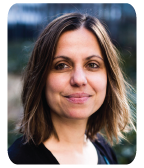
Eleni Diamanti is a CNRS researcher at the LIP6 laboratory, at Sorbonne University in Paris, France. Her research focuses on quantum cryptography and on the development of photonic resources for quantum networks, and aims at the demonstration of a provable quantum advantage in security or communication efficiency with respect to classical resources. Her work in CV-QKD has led to the first commercial product employing this technology. She has also pioneered work in the practical implementation of quantum cryptographic protocols beyond QKD. She is the vice director of the Paris Centre for Quantum Computing, steering committee member of the French and Ile-de-France region networks on Quantum Technologies, and elected member of the Board of Stakeholders of the European Commission Public Private Partnership in Photonics. She also serves as an Associate Editor for Science Advances and IOP Quantum Science and Technology. Her research has been supported by many national and international grants, and was awarded a European Research Council (ERC) Starting Grant. She has co-authored more than 60 papers in peer reviewed journals and has given more than 60 invited talks in international conferences and workshops.
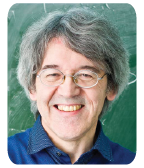
Philippe Grangier is head of the Quantum Optics group at Institut d’Optique in Palaiseau, France, and Professor at Ecole Polytechnique. In the 1980s he worked on experimental tests of Bell inequalities (with Alain Aspect), single-photon interferences, and interferometry using squeezed light. He has performed many experiments related to Quantum Information Processing: single atom qubits in microscopic optical tweezers, quantum cryptography using single photons or continuous variables, entanglement control in atomic and photonic quantum states. He authored more than 200 publications, including about 50 Letters published in Phys. Rev. Lett., Nature or Science. His achievements have been recognized by many national and international awards, including an Advanced Grant from the European Research Council (ERC). He has been the coordinator of several large European projects in the domains of Quantum Optics and Quantum Information Processing, and he is currently the coordinator of SIRTEQ, a large collaborative network (2017-2020, 10 M€) gathering all researchers on Quantum Technologies in the Paris area (Ile-de-France).

Frédéric Grosshans obtained his PhD in 2003 from the Université Paris-Sud. He completed a postdoc at ULB before being awarded a Marie-Curie Fellowship at Max-Planck Institute for Quantum Optics. Since 2005 he has been a CNRS researcher. He is a founding member of PCQC, and will join the QI team at LIP6 in October 2018. He works on the theory of quantum continuous variable and relativistic cryptography and his main research interests are the development of practical cryptographic primitives based on physics. He is most well known for his co-invention of coherent state continuous variable cryptography in 2002. He has 30 publications with over 3800 citations and h-index 18 (GS), has participated in several national and international grants and has been awarded the La Recherche prize in 2005.

Amine Rhouni is a microelectronics research-engineer at CNRS. He received his M.Sc in Electrical Engineering and his PhD in microelectronics for space instrumentation from University Pierre et Marie Curie (UPMC, today Sorbonne University), Paris, France, in 2009 and 2012 respectively. In 2012, he worked as a lecturer in the electrical and computer engineering department of UPMC. In 2013, he was a post-doctoral fellow in the CNRS Laboratory of Plasma Physics at Ecole Polytechnique in Palaiseau, France, where he designed the search-coil’s rad-hard ASIC for the ESA JUICE space mission. In 2015, he was a research engineer in the Electronics for Detectors Department at the CEA, in Saclay, France, where he mainly designed and characterized a CMOS front-end ASIC, for an Infra-Red pixel array detector, operating at 50 mK. Amine Rhouni joined the CNRS LIP6 Laboratory at Sorbonne University in 2016 as a microelectronics research engineer. He is currently working on the design and characterization of analog and digital embedded systems for e-health, test-on-chip and CV-QKD applications and protocols. He is in charge of the electronics platform in the LIP6 Laboratory and the co-animator of a national working group in microelectronics at CNRS. He has authored or co-authored a dozen of scientific papers.
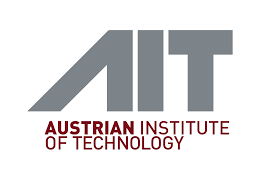
The AIT Austrian Institute of Technology will predominantly focus on WP4, WP5, WP7 and WP 11. AIT is Austria’s largest research and technology organization. Among the European research institutes, AIT is a specialist in the key infrastructure issues of the future. The Republic of Austria (through the Federal Ministry for Transport, Innovation and Technology) has a share of 50.46%, while the Federation of Austrian Industries owns 49.54% of the AIT Austrian Institute of Technology. The AIT has about 1.300 employees – mostly based at the main facilities Vienna Tech Gate, Vienna TECHbase, Seibersdorf, Wiener Neustadt, Ranshofen and Graz – working on the development of the tools, technologies and solutions for Austrian industries that are of utmost relevance for the future. All these efforts comply with our motto “Tomorrow Today”. The AIT Austrian Institute of Technology takes a leading position in the Austrian innovation system and a key role in Europe as the RTO focusing on the key infrastructure topics of the future. AIT provides research and technological development to realize basic innovations for the next generation of infrastructure related technologies in the fields of Energy, Mobility Systems, Low-Emission Transport, Health & Bioresources, Digital Safety & Security, Vision, Automation & Control and Technology Experience. These technological research areas are supplemented by the competence in the area of Innovation Systems & Policy. As a national and international network node at the interface of science and industry AIT enables innovation through its scientific-technological expertise, market experience, tight customer relationships and high quality research infrastructure.

Hannes Hübel received his Ph.D. in 2004 at the Queen Mary University in London. He held post-doctoral positions at the University of Vienna, Austria (Quantum Optics, Quantum Nanophysics and Quantum Information Group) and at the University of Waterloo, Canada (Institute for Quantum Computing), working on entanglement based QKD and multi-photon experiment. In 2010 he became assistant professor at the University of Stockholm, Sweden (Department of Physics/Quantum Optics). Since 2015 he is the leader of the Optical Quantum Technology group at AIT, focusing on quantum communication technology.
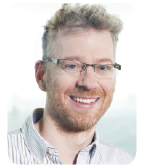
Christoph Pacher studied at the Technical University of Vienna where he received his doctorate in technical sciences in 2007. Since 2004 he is working for AIT. His main research areas are post-processing for quantum cryptography, quantum number generation and coding theory. He participated in several research projects where he laid his focus on algorithms for quantum key generation.
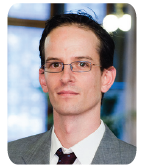
Michael Hentschel obtained his PhD in the field of laser technology from the Vienna University of Technology. To this end he worked on the optimization of femtosecond laser amplifiers and the generation of attosecond X-ray pulses. He spent 3 years in an Austrian laser company with R & D tasks in the field of ultrashort pulse lasers. Then he began his work on Quantum Information and Quantum Cryptography at the University of Vienna with Prof. Anton Zeilinger. Since the summer of 2009 he is working for AIT on various quantum cryptography projects.
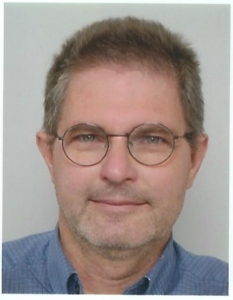
Andreas Poppe returned to AIT at the end of 2019 and is part of the coordination team for OpenQKD as well as the project manager for QSAFE. His main interest is to prepare EuroQCI. He has 25 years of experience in experimental work in the field of nonlinear and quantum optics. Scientifically, his main achievements are the first demonstrations of sub-10-fs laser pulses with stabilized carrier-envelope phase ever and the first QKD-secured bank wire transfer. From 2003 to 2015 he has been working in the field of quantum optics with entangled photons, first at the University of Vienna, than at Austrian Institute of Technology, where he participated at the SECOQC project and organized the SECOQC conference in 2008. After that his main focus was to commercialize quantum products and enable quantum signal to be transmitted on the same fiber co-propagating with communication channels. At Huawei he pushed the integration of CV-QKD in commercial telecom infrastructure. He was awarded Senior membership at OSA in 2021. His 100 publications have been cited roughly 6000 times.

Roland Lieger received his PhD from the Vienna University of Technology in 2002 at the Institute for Computer Aided Automation. Since 2003 he is working as a software engineer at AIT, focusing on FPGA programming and real-time data-processing in general.
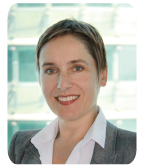
Petra Schaper-Rinkel has been a Senior Scientist at the AIT Austrian Institute of Technology since 2009, where she drives principally EU projects on science, technology and innovation policy and foresight. Prior to joining AIT, she was a senior lecturer at the Technical University of Berlin and a principal investigator at Freie Universität Berlin for five years. She earned her doctoral degree in 2003 from the Department of Political Sciences at Freie Universität Berlin, writing on the European Information Society and the interrelationship between European integration and networks of governance of science, technology and innovation on the European level. In addition to holding research positions and lecturer positions at Humboldt University, Freie Universität Berlin, Technical University of Berlin and the University of Innsbruck, she also designed and managed governmental programs to support microsystems technologies and other emerging technologies at VDI/VDE-IT, a project management organization commissioned by the German Federal Ministry of Education and Research (BMBF).

Susanne Giesecke is a senior scientist at the Austrian Institute of Technology’s Center for Innovation Systems and Policy. A political scientist by training, she presently works on qualitative innovation research and Grand Challenges, technology assessment; evaluation of R&D programmes as well as foresight. She has been engaged in several research projects and foresights as well as foresight networks, and the future of Health and Health Policy. Latest projects of hers have dealt the international Foresight Community in Europe and beyond (network and training projects EFP (“European Foresight Platform”) and IFA (“International Foresight Academy”)), the governance of converging technologies in the health sector (project “Personal Health System Foresight”) and the identification of Grand Challenges for the European Research Area (project ”Forward Visions for the European Research Area). Next to research projects, Dr. Giesecke’s work is dedicated to a broad participatory approach, involving stakeholders and other experts into the problem solving of future societal challenges.

Edwin Querasser received his formal electronic engineering education in Vienna. After working for Siemens he joined AIT to work on embedded system design and development. He has strong expertise in RF electronics, analogue & digital signal-processing and FPGA development.
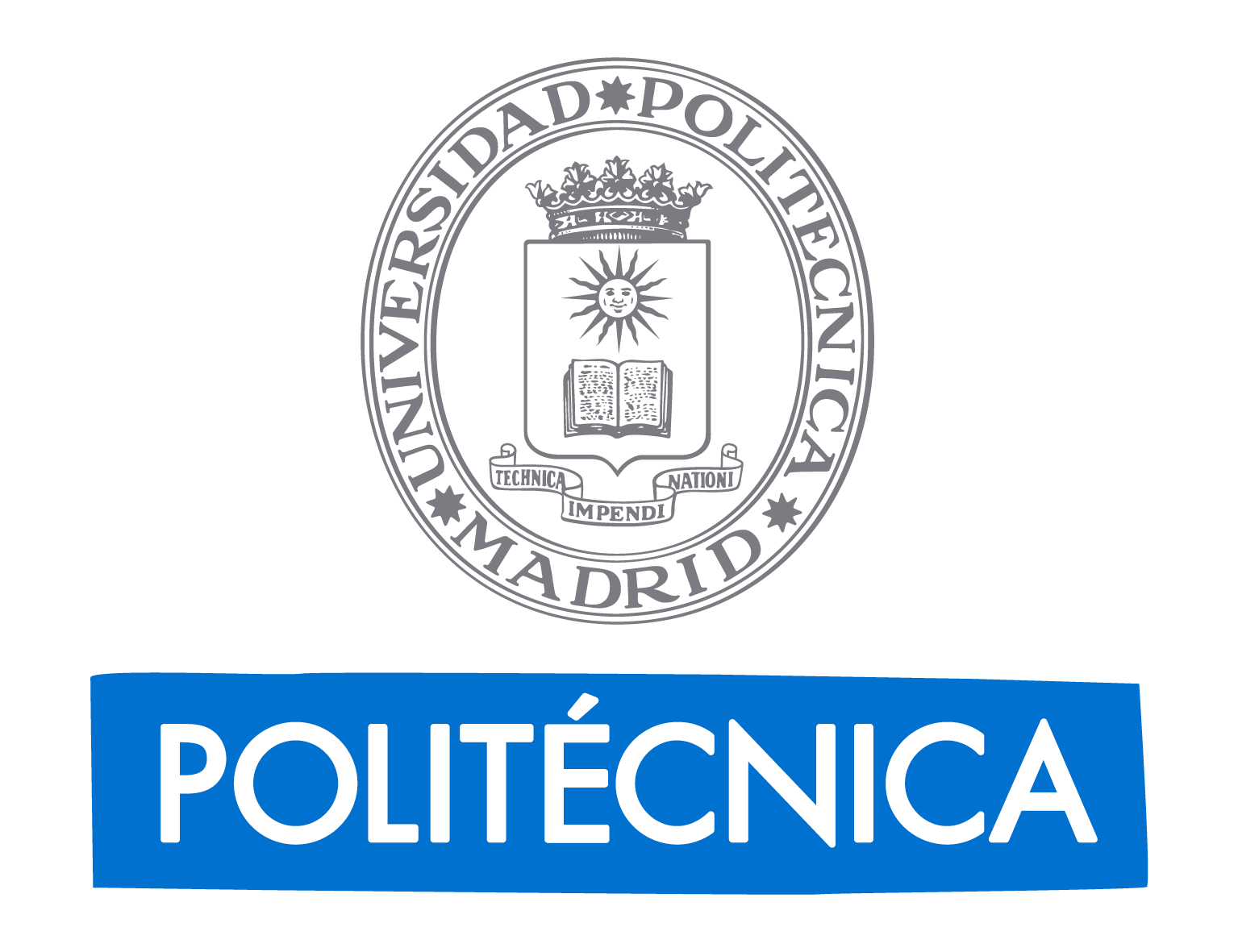
The Universidad Politécnica de Madrid -Center for Computational Simulation (UPM-CCS) group will mainly contribute to the WP8 “Next generation Integrative Network architecture” UPM-CCS has been researching the integration of quantum technologies in optical networks. The UPM is the largest Spanish technological university. With two recognitions as Campus of International Excellence, it is outstanding in its research activity together with its training of highly-qualified professionals, competitive at an international level. More than 2,400 researchers carry out their activity at the UPM, grouped in 204 Research Groups, 19 Research Centers or Institutes and 55 Laboratories, all of them committed to transform the knowledge generated into innovation advances applied to the production sector, contributing to solve the challenges of the European citizens. It is among the Spanish universities with the greatest research activity and first in the capture of external resources in a competitive regime. UPM headed the Spanish University participation in the 7th European Framework Program with 290 projects. In H2020 UPM keeps on its active participation thank to its highly innovation driven profile. UPM signs annually around 600 contracts with private businesses, due to its traditional and close relationship with the industrial and business sector, which supports and back its research and technology development in all Engineering fields. One of the main UPM technology transfer driver is the business creation, such as the ActúaUPM program that has generated +200 businesses in the last 10 years, 80% of which still exists.
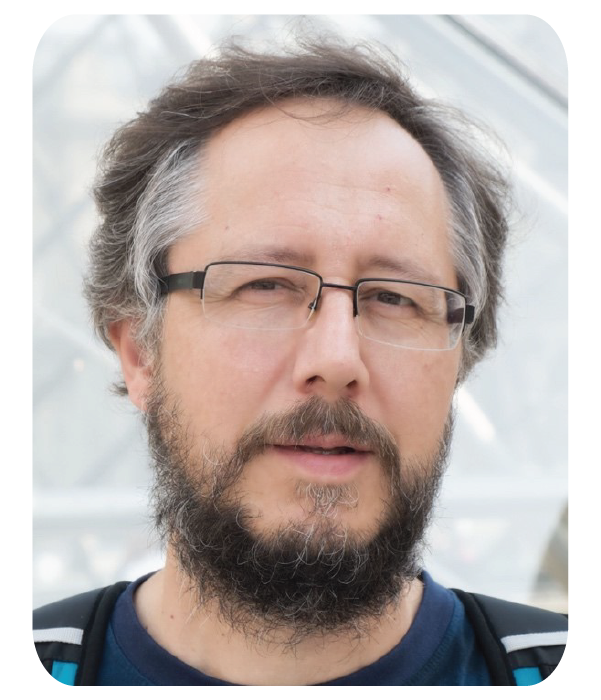
Vicente Martin is a full Professor of Computational Science at the Technical University of Madrid (UPM – Universidad Politécnica de Madrid). Ph. D. Physics U. Autónoma de Madrid on the numerical simulation of quantum systems. He has taught scientific computing, parallel programming, numerical analysis and quantum computing for more than 15 years. His main research interests are computational sciences, high performance computing -including visualization and distributed infrastructures- and quantum information, in particular the integration of QKD in communications networks. He has served as director of the Madrid Supercomputing Center, the second largest in Spain, and is currently the director of the Center for Computational Simulation. He was founding member of the Specialized Group in Quantum Information and Computation of the Spanish Royal Society of Physics and of the European Telecommunications Standards Institute (ETSI) Quantum Industry Specification Group (QISG) on QKD. He has written over 70 scientific papers, contributed to standardization documents, directed over 25 research projects and been awarded 5 patents.
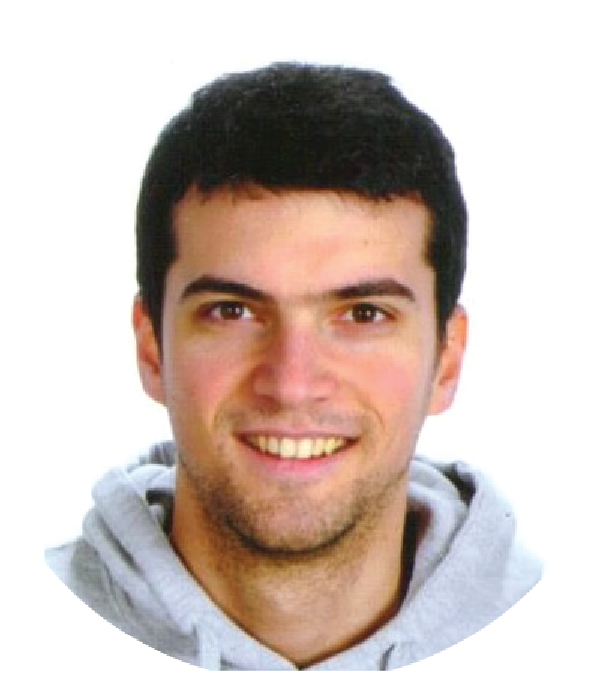
Alejandro Aguado received the Graduate degrees in mathematics and computer science from the Universidad Autónoma de Madrid, Madrid, Spain, in 2014. He worked with Telefonica I+D collaborating as a Researcher in FP7 European projects (STRAUSS, IDEALIST, and ONE). He worked also as a Research Associate in the topics of software defined networking and network functions virtualization at the High Performance Networks group, University of Bristol, Bristol, contributing in FP7 (Strauss, Lightness), H2020 (Replicate) and EPSRC (Toucan, QCommsHub) projects. He is currently a researcher and a PhD student in the Center for Computational Simulation at Universidad Politécnica de Madrid, working on the integration of quantum key distribution technologies in next generation network paradigms.
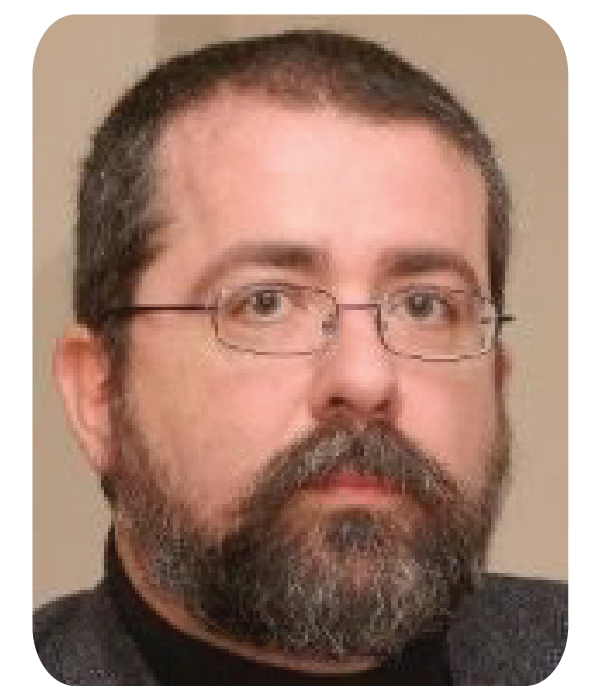
Jorge Dávila is an Associate Professor of Security and Information Protection. He leads the “CryptoLab”, the Cryptology Laboratory at UPM since 1993. His research interest spans ciphering algorithms, experimental cryptoanalysis, digital ID, protocol analysis, virtual private networks, design of crypto-processors and security hardware, etc. He served as member of the Specialist Task Force in the European Telecommunications Standards Institute, Industry Specification Group on Quantum Key distribution, with responsibility for standards in Security Specification.

UPOL – Palacký University Olomouc will lead and extensively contribute to activities in WP6, it will also contribute to research activities in WP9. UPOL is the second oldest University in the Czech Republic, which is renowned for its outstanding research performance. Activities within the project will be carried out at the Department of Optics, which is a part of the Faculty of Science of Palacky University. The Department, led by Assoc. Prof. Jaromir Fiurasek, is located in the modern main building of the Faculty near historical centre of Olomouc.
Several research centers were created on the basis of the Department: “Measurement and information in optics”, “Center of Modern Optics” (2006-2011) and “Center for Information and Uncertainty” (2011-2014) funded by Ministry of Education of the Czech Republic; “Center of Excellence for classical and quantum interactions in nanoworld” (2014-2018), funded by Czech Science Foundation; “Center for Digital Optics” (2012-2019), funded by Technology Agency of the Czech Republic, which contributed to the development of research infrastructure and establishment of the top-level research traditions at the Department.
The eepartment is active in all the areas of quantum optics and quantum information, such as single-photon quantum information processing (both theoretical and experimental), continuous-variable quantum information processing with light and atoms (theoretical), and quantum nonclassicality, correlations and entanglement (theoretical). Researchers of the Department took part in EU-funded FP7 projects COMPAS (2008-2011) and BRISQ2 (2013-2015), dedicated to quantum computing and quantum communication with continuous variables.

Vladyslav Usenko, a senior post-doctoral researcher at the Department of Optics, is a principal investigator of four national and co-investigator of two international projects. Dr. Usenko authored over 30 publications in peer-reviewed scientific journals including Nature Communications. He has extensive experience in the fields of quantum optics and quantum information, in particular, in CV QKD, with relevant results including development of novel protocols such as unidimensional coherent-state protocol, security analysis of the protocol implementations in experimental-theoretical collaboration, analysis of the role of trusted and untrusted noise in the protocol implementations. Dr. Usenko had analysed the impact of multimode structure of states and detectors as well as relevant side channels on security of CV QKD and suggested noise addition and residual noise monitoring as counter-measures against side-channel losses and noise respectively. He had also extensively studied the role of nonclassicality of signal states, which he had shown to make the protocols more robust against low post-processing efficiency and channel excess noise, and suggested optimal use of classical and quantum resources in CV QKD protocols.
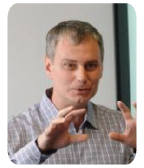
Radim Filip is a Professor at the Department of Optics. He had been awarded an Alexander von Humboldt fellowship for senior researchers at MPL in Erlangen (2005-2006). He has received the Special Recognition of Czech Science Foundation (2007), the Alexander von Humboldt Return Fellowship (2007) and the Prize of President of Czech Science Foundation (2006). He was a visiting professor at MPL in Erlangen (Germany), DTU in Lyngby (Denmark) and ENS Paris-Cachan (France). He was principal investigator of six national and international projects, including EU-funded FP7 BRISQ2 project. Prof. Filip authored over 150 publications in international high-impact peer-reviewed journals (including 2 letters in Nature Physics, 1 in Nature Communications, 1 in NPJ Quantum Information, 17 in Physical Review Letter and 9 in Scientific Reports), which have collected more than 1500 citations (excluding self-citations). His research is focused on the development of methods for control, manipulation and verification of nonclassical quantum states of light and atoms, in particular, in application to CV QKD. He was the first to show feasibility of CV QKD with noisy coherent states, studied possibilities to purify the states for CV QKD tasks, and contributed to the major developments in the field of CV QKD at the Department.

Laszlo Ruppert is a post-doctoral researcher at the Department of Optics. He has authored over 20 publications in peer-reviewed scientific journals including Scientific Reports. He has vast experience in quantum estimation with application to CV QKD and in security analysis of practical CV QKD protocols in the finite-size regime.

The Fraunhofer Institute for Telecommunications, Heinrich- Hertz-Institut (HHI) will coordinate WP4 Advanced Components within a new generation of photonic CV-QKD devices will be developed. The HHI, located in Berlin, Germany, has been a member institute of the Fraunhofer Association (Fraunhofer Gesellschaft zur Förderung der Angewandten Forschung e.V.) –its legal representative- since 2003. HHI is organized in 7 departments that carryout R&D activities in the areas of photonic networks, mobile broadband communications, image processing, high-speed hardware architectures, interactive media/human factors, fiber optical sensor systems, and photonic components. It employs more than 250 people and has a Quality Management System in the field of Photonics since 2000.
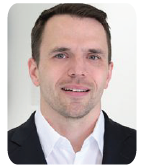
Patrick Runge received the Dipl.Ing. degree in computer science and the Ph.D. degree in electrical engineering from the Technical University of Berlin, Berlin, Germany, in 2005 and 2010, respectively. From 2005 to 2007, he was with the Hymite GmbH, where he was involved in the RF design and measurement of optoelectronic packages for optical communication. In 2007, he returned to the Technische Universität Berlin to pursue the Ph.D. degree, where he investigated nonlinear effects and applications of ultralong semiconductor optical amplifiers. After completing the Ph.D. degree, he worked from 2010 to 2011 for a patent attorney. Since 2011, he has been with the Fraunhofer Heinrich Hertz Institute (HHI), Berlin, Germany, where he is engaged in the development and fabrication of photodetectors based on InP. He is currently the Head of the Detector Group within the Photonic Components Department, HHI.

Sharam Keyvaninia received the degree in applied physics and the M.Sc. degree in photonics from Sharif University of Technology, Tehran, Iran, and Kerman Graduate University of Technology, Kerman, Iran. Since 2008, he hasbeen with the Photonic Research Group, Interuniversity Microelectronics Center/ Ghent University, Ghent, Belgium, and a Visitor Scientist in the Photonic Integration Group, Technical University of Eindhoven, Eindhoven, The Netherlands. He developed the technology for integrating III–V material on top of silicon-on-insulator based on die-to-wafer bonding and new fabrication processes for photonic devices. Since 2015, he has been the Scientific Researcher in the Fraunhofer Heinrich Hertz Institute, Berlin, Germany. His current research focuses on the design and fabrication of integrated photonic devices. He is a member of the IEEE Laser and Electro-Optics Society and Optical Society of America.

Tobias Beckerwerth received the BSc. degree in physics from Freie Universität Berlin, Germany, in 2012 and earned the M.Sc. from Technical University Berlin and partly Université Joseph Fourier de Grenoble in 2015. From 2014 he is working at Fraunhofer HHI and is currently pursuing the Ph.D degree in the field of advanced photodetectors on InP.

The main focus of the Technical University of Denmark (DTU) is to carry out research in technical and natural sciences that contributes to the development of society. Some of the current profile areas are nano-, information and communication technology. DTU is among the best ranked technical universities in Europe. The Department of Physics at DTU has significant and internationally recognized activities in quantum optics and quantum information. The ‘Quantum Physics and Information Technology’ (QPIT) section is led by Prof U. L. Andersen and conducts research within the field of quantum technology with a particular focus on continuous variable (CV) quantum information processing (QIP) and communication at the telecom wavelength. The section currently comprises 5 faculty members, 10 PhD students, 10 postdocs and 2 technicians, but under the recently opened ‘bigQ’ Center of Excellence, the section will grow significantly. QPIT has five high-tech laboratories comprising new acquisition and control equipment for advanced quantum technology, and significant extensions are planned for summer 2018. The group has pioneered a number of first-ever contributions in CV-QIP such as a squeezed states quantum key distribution (QKD), CV quantum error correction and CV measurement-device independent QKD.
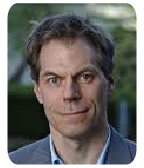
Ulrik L. Andersen is a full professor in experimental quantum optics, heading the section for Quantum Physics and Information Technology (QPIT) at DTU Physics, leading the Center of Excellence on Macroscopic Quantum States (bigQ, 2017-2027), and being one of three scientific directors of a National Center on Quantum Technology (2016-2021). He is also heading a cross-disciplinary center on quantum technology at DTU (www.quantum.dtu.dk). Over the course of his career he has made a very broad range of significant, high-impact contributions to quantum optics, technology, and information including the development of new techniques to generate, control and optimally measure non-classical states of light (Gaussian, non-Gaussian and entangled states). His impact is reflected by the publication of 9 articles in Nature magazines, 32 articles in Physical Review Letters and 4 invited review articles. For these contributions he won several prizes, e.g. the advanced Sapere Aude award in 2015 and the highly prestigious Eliteforsk prize of the Danish Research Council in 2013.
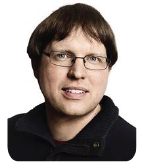
Tobias Gehring obtained his PhD in 2013 at the Leibniz University Hannover. After a postdoc from 2013 to 2015 at DTU he was appointed tenure tracked Assistant Professor by the same university. His field of expertise is continuous variable quantum information, in particular continuous-variable quantum key distribution with entangled and coherent states. He performed several first-ever experiments in quantum key distribution, for instance the implementation of a CVQKD protocol with security against coherent attacks and a measurement-device independent QKD protocol. He has published more than 50 papers in refereed international journals from which 8 are in Nature magazines and 7 in PRL. He is one of the organizers of the international conference Central European Workshop on Quantum Optics in 2017.

Jonas S. Neergaard-Nielsen is a senior researcher in the section for Quantum Physics and Information Technology (QPIT) and in the bigQ Center for Macroscopic Quantum States. He obtained his PhD from the Niels Bohr Institute at University of Copenhagen in 2008. His PhD work on generation of non-Gaussian quantum states of light has become a cornerstone in the field of hybrid continuous variable–discrete variable QIP. He continued along this path for 3 years at the National Institute of Information and Communication Technology (NICT) in Tokyo, Japan. His results there include entanglement distillation and teleportation by hybrid CV–DV means, central to the topics in WP9. Through winning the competitive grants Sapere Aude Research Talent and VILLUM Foundation Young Investigator he established himself within QPIT at DTU Physics, with research interests spanning optical QIP, non-classical and macroscopic quantum states, quantum opto-mechanics, and cavity QED.

Nitin Jain is a postdoc at DTU Physics. He obtained his PhD from the University of Erlangen-Nuremberg in 2015. In this work, performed at the Max Planck Institute for the Science of Light, he successfully investigated several security loopholes on a commercial QKD platform from ID Quantique. Thereafter, as a postdoc at Northwestern University, he worked on the development and optimization of novel quantum communication systems based on quantum frequency conversion (QFC). Notably, he demonstrated the first QFC temporal mode sorting system in a four-dimensional Hilbert space. He also performed ground-breaking experiments on quantum state engineering at the few-photon level during his M.Sc. at the University of Calgary. Before embarking on this research career, he worked as a software engineer at NVIDIA Graphics in India, developing video codecs for handheld devices. He is a recipient of the National Talent Search Exam Award (India), and in 2006, he was recognized among the top 10% performers in NVIDIA worldwide.
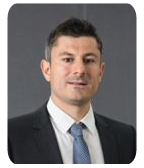
Darko Zibar received the M.Sc. degree in telecommunication and the Ph.D. degree in optical communications from the Technical University of Denmark, Lyngby, Denmark, in 2004 and 2007, respectively. He was a Visiting Researcher with the Optoelectronic Research Group, University of California, Santa Barbara, CA, USA, in 2006 and 2008, where he worked on coherent receivers for analog optical links. In 2009, he was a Visiting Researcher with Nokia-Siemens Networks, where he worked on clock recovery techniques for polarization multiplexed systems. He is currently an Associate Professor at DTU Fotonik, Technical University of Denmark. His research interests include development and application of machine learning methods to optical communication and optical fibre sensing systems. He is a recipient of Young Researcher Award by University of Erlangen-Nurnberg, in 2016, for his contributions to applications of machine learning techniques to optical technologies. He was also part of the team that won the HORIZON 2020 prize for breaking the optical transmission barriers.

Télécom ParisTech (TPT) will coordinate WP7, and will contribute to several technical activities in WP6, WP7, WP8 and WP9. Founded in 1878, TPT is the leading French school in Information and Communication Technology (ICT) and one of France’s top 5 graduate engineering schools.Télécom ParisTech research offers a wide coverage of the ICT field, and is organized within a large laboratory called LTCI, subdivided into 14 research groups ranging from Computer Science and Networks to Signal Processing, Digital Communications, Optical Engineering, Quantum Information, Electronics and Applied Mathematics. Télécom ParisTech research staff is of about 400 researchers, among which 130 professors and 250 PhD students and postdocs,. The lab’s scientific production amounts to 650 publications per year in international journals and conferences. LTCI also develops stable partnerships with private companies through research chairs and joint laboratories. Within Université Paris-Saclay, LTCI is strongly involved in Digicosme (Digital Worlds: Distributed data, programs and architectures), LMH (Hadamard Mathematics Labex), the SystemX institute for technological research and the projects ISN (Institute for Digital Society), Nano Design, CDS (Paris-Saclay center for data science) and PIM (Physics and Engineering in Medicine). LTCI is also part of the French national network of Carnot Institutes.

Romain Alléaume is Associate Professor at Télécom ParisTech. He is leading a research activity on quantum cryptography, in particular quantum key distribution (QKD) as well as on cross-disciplinary topics linking quantum information with cryptography, networking and security. He graduated from ENS Paris in 2002 and from Télécom ParisTech in 2004. He completed his PhD, from Paris VI university, in 2004 and was co-recipient of “magazine La Recherche” scientific prize. Romain Alléaume then joined Télécom ParisTech and coordinated the activity on QKD performed within the European FP6 project SECOQC. This project led to the first QKD network deployment in Europe, in 2008. After being laureate of two prizes at the « concours national de créations d’entreprises innovantes » in 2007 and 2008, Romain Alléaume co-founded the start-up company SeQureNet. Spin-off of Télécom ParisTech, SeQureNet has developed, and successfully commercialized the first continuous-variable quantum key distribution (CV-QKD) system in 2013. Romain Alléaume has participated to more than ten National or European research projects during the past 10 years. He has supervised 4 PhDs and published more than 40 publications in international journal or conferences. He also holds 4 patents Romain Alléaume is a founding member of the ETSI QKD Industry Standardization Group and actively contributes to the international effort aiming at bridging the gap between quantum technology and industry.

Cédric Ware is an Associate Professor in Télécom ParisTech (formerly ENST, Paris). He was educated in École Normale Supérieure (Paris), then ENST, which he joined as an academic staff member in 1998. He holds M. Sc. (1996), M. Eng. (1998), Ph. D. (2003) and Habilitation (2013) degrees. His research activities have followed the thread of all-optical and opto-electronic functionalities, such as clock recovery, optical CDMA, optical packet switching. He is now transitioning towards optical networking, towards a goal of cross-layer optimization of both performance and energy consumption. Author or co-author of over 60 publications and communications, he has participated in several French and European projects. He was a national delegate for the European COST Action 288 on Nanoscale and Ultrafast Photonics; and he led Joint Experimental Activities in the European Networks of Excellence e-Photon/ONe+ and Euro-Fos. He has driven or taken part in several international collaborations and exchange programs, including a sabbatical stay in Columbia University (New York). He lectures on topics ranging from Quantum Mechanics to Optical Networking, and coordinates the M. Sc. on Optical Networking and Photonic Systems, part of the Erasmus Mundus Joint Master Degree SMARTNET.

Yves Jaouën received the Ph.D degree in Physics from Ecole Nationale Supérieure des Télécommunications (ENST), Paris, France in 1993, then his HDR (Research management certificate) in 2003. He had joined ENST (now Télécom ParisTech) in the Communications and Electronics department in 1982 where he is currently a Full Professor. He is lecturing in the domain of electromagnetic fields, optics and optical communications systems. His present researches include high bit rate coherent optical communication systems including digital signal processing aspects, new characterization techniques for advanced photonic devices, high power fiber lasers, fiber optics and remote sensing. He is author or co-author of over 230 papers in journals and communications.

Mengdi Song received the Dipl.-Ing degree in telecommunications from the Institut National des Sciences Appliquées (INSA), Lyon, France, in 2012, and the Ph.D. degree from Télécom ParisTech, Paris, France, in 2016. She is currently a research engineer with Télécom ParisTech in the group of optical communications. Her research interests include digital signal processing techniques, such as OFDM & Nyquist-WDM, for future long-haul optical systems.
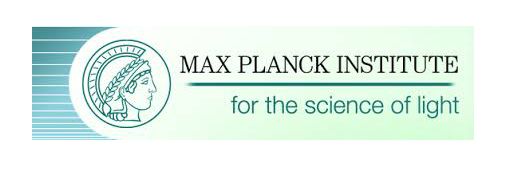
The Max Planck Institute for the Science of Light (MPL) will coordinate the work package “Performance Evaluation and Benchmarking” (WP10) and contribute to other technical activities (WP 1, 2, 3, 4, 6, 7, 8 and 11). The Max-Planck-Gesellschaft (MPG) is Germany’s most successful research organization. Under its umbrella, over 80 Max Planck Institutes (MPIs) conduct basic research in natural sciences, life sciences, social sciences, and the humanities. In total, 18 Nobel laureates have emerged from the ranks of its scientists. The Max Planck Institute for the Science of Light (MPL) was founded in 2009. It has developed from the Chair of Optics at the Physikalisches Institut of the Friedrich-Alexander-Universität Erlangen-Nürnberg. The MPL currently consists of of four divisions, several independent research groups and three Technical Development and Service Units (TDSU) and of more than 100 scientists, PhD and Diploma students. The spectrum of the work spans the whole range from technical optics to quantum optics. The available infrastructure includes a laser pattern generator for generating diffractive optical elements and computer generated holograms, various pieces of interferometric test equipment, optical fibre fabrication equipment and characterization tools, and four ultrashort pulsed laser laboratories. The projects range from optics in medicine and advanced distance sensors, to the study of resolution limits e.g. in microscopy, nanophotonics and plasmonics, photonic crystal structures, optomechanics, quantum measurements and optical communication. The MPL is operated by the Max Planck Gesellschaft.
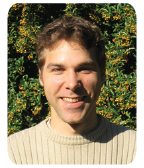
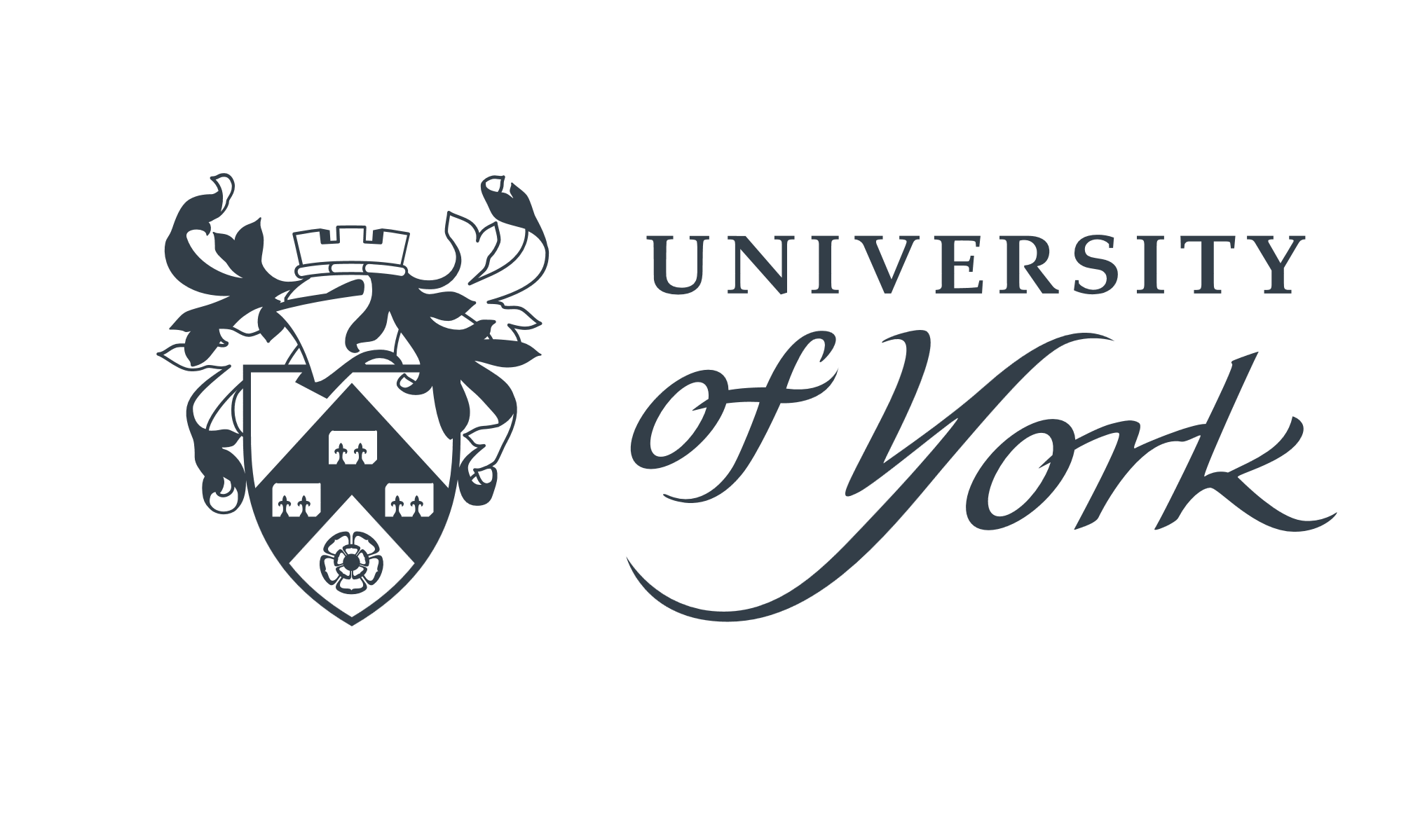
The University of York (UY) is involved in WP6 and WP9. The university, established in 1963, had a total income of £331.4 million in 2016/17, of which £66.0 million was from research grants and contracts. In 2012, York joined the Russell Group of research-intensive British universities. It was ranked joint 12th in the UK amongst multi-faculty institutions for the quality of its research and 24th for its Research Power in the 2014 Research Excellence Framework. The 2018 national ranking of York is 16th= by The Times, 17th by The Guardian and 20th by The Complete University Guide. Computer Science at the University of York is one of the leading departments in the UK, with a long history of successful collaboration with industry, including IBM, Rolls-Royce, Microsoft, Toshiba, Leonardo UK, and NASA among others. The quantum information group (led by Pirandola and Braunstein) works in topics of quantum cryptography, communication, sensing and metrology. Currently, York leads the EPSRC-funded quantum communications hub which aims at building the first secure quantum network in the UK.

Stefano Pirandola is Full Professor in quantum information at Computer Science. In the past, he has been Reader (2013-16), Leverhulme research fellow (2013-15), Lecturer (2010-13) and Marie-Curie fellow (2007-2010) working at MIT from 2007 to 2009. He is member of the Institute of Physics and fellow of the Higher Education Academy. Pirandola has contributed to the development of the “continuous-variable” formulation of quantum information. His main interests are in the areas of quantum communication, cryptography and sensing, for which he has established ultimate theoretical limits besides designing practical technological implementations. Currently, he is one of the lead investigators of the UK quantum communications hub, a large 24-million pounds project aimed at building a secure quantum network in the UK. Pirandola’s research has been constantly published in high-impact journals, including Physical Review Letters, Nature, Nature Photonics, Nature Physics, and Nature Communications. His 2012 review on “Gaussian quantum information” published in Reviews of Modern Physics has been cited more than 1000 times (Google Scholar). Other papers have been extensively reviewed in scientific magazines, such as Physics World, Le Scienze (Scientific American), Physics, Physical Review Focus, Nature Physics, New Scientist, Communications of the ACM, SPIE Newsroom, Kurzweil Accelerating Intelligence, Physorg.com and many other blogs. His works have attracted about 4500 GS citations, most of which in the last five years.

Huawei Technologies Düsseldorf GmbH (HWDU) is involved in WP8, WP10, WP11. Huawei is a leading global information and communications technology (ICT) solutions provider. Its products and solutions are deployed in over 170 countries, supporting the communication needs of one-third of the world’s population. Huawei offers the most complete telecom product portfolio in the industry to customers in Europe and worldwide. Huawei’s 170,000 employees are committed to meeting the needs of telecom carriers, enterprises and consumers by providing competitive end-to-end ICT solutions and services. Founded in 1987, Huawei is a private company fully owned by its employees. In Europe, Huawei currently has over 10000 staff, of whom over 1800 are working in R&D. Our European Research Institute (Huawei ERI) oversees the activities across our network of European R&D facilities: 18 R&D sites spanned across Europe (Belgium, Finland, France, Germany, Ireland, Italy, Sweden and the UK) covering wireless, fixed, optical, future network, standard and chipset design technologies. In addition, Huawei cooperates with more than 80 academic partners in Europe, investing over 75 Mio € p.a. in partnerships. Huawei’s research facility in Munich, which belongs to Huawei Technologies Düsseldorf GmbH (HWDU), started in 2016 and streamlines and manages Huawei’s Quantum technology development effort at the European level. Currently 10 people conducts research for quantum communication systems and enabling technologies, in particular work on seamless integration of CV-QKD into Huawei’s telecom product lines. Export control of IPR will apply to the quantum related research to keep the know-how generated within CiViQ in EU.

Momtchil Peev has studied Mathematics and Physics at the University of Sofia, Bulgaria. There he received his PhD in theoretical Solid State Physics. Later he focused on research in the field of mathematical methods, related to the foundations of Quantum Mechanics, more specifically phase-space representations of low dimensional quantum systems. Since 2001 he had been responsible for Quantum Information Theory support for practical QKD, development of QKD protocols, design and development of QKD networks. He participated actively in the management team of the FP6-IP SECOQC, and led the network implementation sub-project. He co-authors more than 80 publications, many on QKD Networks and security of QKD. Since September 2015, he is an Expert in Huawei Technologies Duesseldorf GmbH, Germany and heads the Quantum Communication Network project there.

Andreas Poppe was at Huawei between September 2015 and October 2019 and headed the experimental developments towards quantum cryptography done at Huawei in Europe. He has >20 years of experience in experimental work in the field of nonlinear and quantum optics. Scientifically, his main achievements are the first demonstrations of sub-10-fs laser pulses with stabilized carrier-envelope phase ever and the first QKD-secured bank wire transfer. From 2003 to 2015 he has been working in the field of quantum optics with entangled photons, first at the University of Vienna, then at Austrian Institute of Technology, where he participated in the SECOQC project and organized the SECOQC conference in 2008. After that, his main focus was to commercialize quantum products and enable quantum signals to be transmitted on the same fibre co-propagating with communication channels. Now he continue this work at Huawei to integrate CV-QKD in commercial telecom infrastructure. His approx. 100 publications have been cited roughly 4000 times.

Nokia Bell Labs France (NBLF) will contribute to several technical activities (WP 3, 7 and 10). Nokia is a global leader in the technologies that connect people and things. Powered by the innovation of Nokia Bell Labs and Nokia Technologies, the company is at the forefront of creating and licensing the technologies that are increasingly at the heart of our connected lives. With state-of-the-art software, hardware and services for any type of network, Nokia is uniquely positioned to help communication service providers, governments, and large enterprises deliver on the promise of 5G, the Cloud and the Internet of Things. Nokia Bell Labs, Nokia’s research and innovation arm, creates the disruptive technologies that are shaping the way the world communicates and connects. With expertise in analytics, cloud, fixed, optics and wireless and by collaborating openly with the global innovation community, Nokia Bell Labs is seeking the technology solutions that will transform the connected world. For 90 years, scientific breakthroughs at Nokia Bell Labs have fundamentally transformed the ICT industry, and won 8 Nobel Prizes.
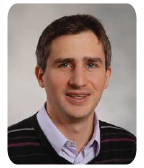
Gabriel Charlet was born in Rueil Malmaison (France) in 1976. Dr. Charlet received an engineering degree from the École Supérieure d’Optique in 1999 (Orsay, France) and a PhD in physics in 2011 from University Paris XI. He joined Alcatel Research and Innovation (now Nokia Bell Labs) in 2000. Since then he has been working on WDM transmission systems and realized several multi-terabit/s transmission records. He also addressed the topic of advanced modulation formats. Since 2016, he has been appointed director of the coding, processing and transmission research group which intends to further increase total bit rate transported in an optical fiber without compromising the transmission reach. He is the first author of more than 40 papers including 10 Postdeadline papers in major conferences and more than 35 patents. In 2007, he received the “Fabry de Gramont” award for my work on fiber optics communication and advanced modulation formats. In 2010, he has been selected by the Technology Review from MIT (TR35) as one the 35 innovators below 35 years for my work on 100Gbit/s product using coherent detection. In 2011, he has been selected by Fast Company as one of the 100 most creative people in business and received also the World Technology award in communication technology.
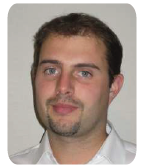
Jeremie Renaudier is a distinguished member of technical staff in optical WDM transmission systems and is the head of the optical transmission department at Nokia Bell Labs, France. He received the M.S. degree in optical communications and networks from Telecom Bretagne, Brest, France in 2002, and the Ph.D. degree from the Telecom Paris, Paris, France, in 2006. His Ph.D. thesis dealt with the application of optical nonlinear effects in compound semiconductor devices for high bit rate systems. His doctoral work contributed to the first demonstration of all-optical clock recovery using mode-locked lasers at 40Gb/s. Since joining Bell Labs 11 years ago, he has been primarily working on advanced modulation formats together with coherent detection and digital signal processing for long-haul and ultra-long-haul optical fiber transmissions at 40Gb/s and 100Gb/s. His work contributed to several multi-Terabit/s transmission records. For the past few years, he has been extensively involved in forward-looking research for beyond 100G transmission systems employing coherent receivers, demonstrating long-haul and ultra-long haul transmissions at up to 1 Tb/s data rate. He has authored or co-authored over 100 journal and conference papers, and holds over 30 patents in optical communications.

Amirhossein Ghazisaeidi received the B.S. degree in electrical engineering, and the M.S. degree in telecommunications systems, both from the Electrical Engineering Department, Sharif University of Technology, Tehran, Iran. He received the Ph.D. degree from the Center for optics photonics, and laser (COPL), ECE department, Université Laval, Quebec City, QC, Canada. He was a postdoctoral researcher in COPL from October 2010 up to June 2011. In July 2011 he joined Alcatel-Lucent (now Nokia) Bell-Labs at Villarceaux, Nozay, France, where he is doing research on signal processing algorithms for optical transmission systems. His research interests include signal processing for high speed optical transceivers, performance analysis of optical links, dynamics and noise properties of optical amplifiers, and modelling optoelectronic devices. He has recently demonstrated record breaking transmission experiments based on nonlinear compensation algorithms and constellation shaping.

Coriant will be involved in WP10 (13 MM) with some interaction with WP7 (3 MM). It was founded as an independent company in 2013 upon the powerful combination of Nokia Siemens Networks, Optical Networks, Tellabs, and Sycamore Networks – a distinguished heritage of over 35 years of technology innovation. Coriant is an industry-leading supplier of dynamic metro-to-core transport solutions. It serves over 500 customers globally, including 90% of the world’s top 50 service providers. The Coriant’s our end-to-end product portfolio and software-defined networking solutions enable mobile and fixed lined operators to reduce network complexity, increase service velocity, and improve resource utilization as transport networks scale in response to a new generation of high-bandwidth services and applications. Following the recent merger with Tellabs, the company operates worldwide in more than 48 countries, with R&D centers in Asia, Germany, Portugal and the United States, as well as a state-of-the-art production center in Berlin, Germany. The optical research group at Coriant was formerly part of Nokia Siemens Networks and has significant presence and a proven record of accomplishment in a number of European projects. Coriant R&D GmbH is a research and development division of the Coriant.

Antonio Napoli received the Masters (2002) and Ph.D. (2006) degrees in electronics engineering from Politecnico di Torino, Italy. He was a visiting student at the TU Wien (2001), a visiting researcher at Universitat Politecnica de Catalunya in Barcelona (2004) and at University College London, U.K. (2005). In 2006, he joined Siemens COM in Munich, where he worked on EDFA transient suppression and DSP for long-haul optical networks. In 2007, he joined Nokia Siemens Networks, where he worked on optical transmission up to 400 Gb/s as part of the project 100GET. He has been with Coriant since 2013, where he led the work-package on data plane within the EU FP-7 IDEALIST project. At the moment, he is leading the task on data center within the CELTIC EU project SENDATE-FICUS. He regularly supervises master and PhD students and serves as reviewer for IEEE/OSA J. of Lightwave technology, OSA J. of Optical Communications and Networking, OSA Optics Express, IEEE Photonic J., IEEE Photonic Technology Letters, and Optics Letters. His research interests include DSP for optical receivers, modulation techniques for long-haul systems, and optical system design. Since 2017, Antonio Napoli is member of the TPC S5 at OFC. He is also member of ONDM, OSA, and of the advisor board of the ERASMUS MUNDI program SMARTNET. Antonio Napoli represents Coriant at the OIForum for the optical physical layer.
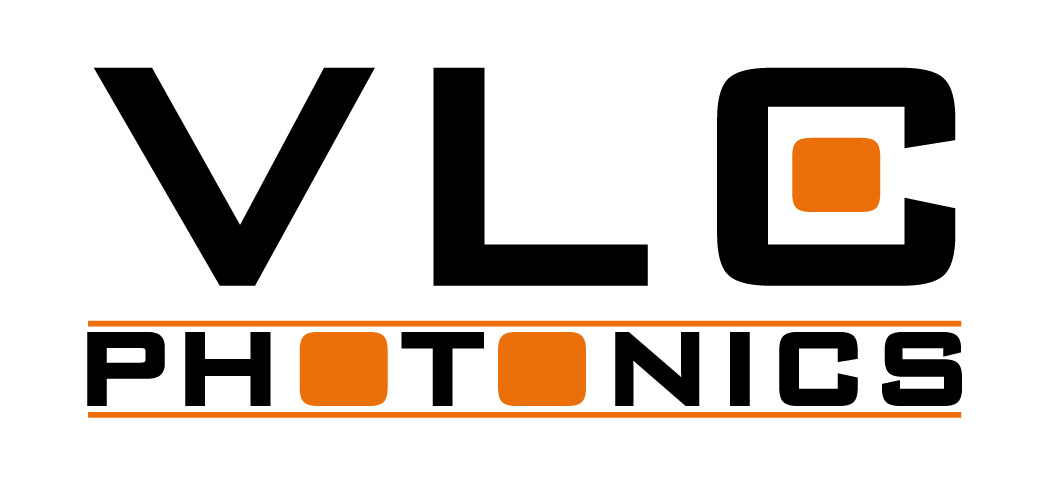
VLC Photonics is a 2011 spin-off company from Universitat Politecnica de Valencia (UPV, Spain), specifically from the Optical and Quantum Communications Group, worldwide reputed in the fields of Optical Communications, Quantum optics and Microwave Photonics. It is devoted to providing all kind of services related to the development of photonic integrated circuits (PICs). The technical team of VLC involves professionals with expertise in photonic systems, optical signal processing and photonic integrated circuits, developed for more than 10 years within the industry and competitive European research programs. VLC Photonics offers several solutions in the field of integrated optics: techno-economical feasibility studies and consultancy, in-house PIC design, characterization and test, and full PIC prototyping through external manufacturing and packaging/assembly partners. VLC Photonics, as a pure-play fabless design house, works with multiple foundries embracing the generic integration model, and makes use of these fabrication platforms to always chose the most suited substrate material (Silicon-on-insulator, Silica/PLC, SiN/TripleX, InP/GaAs) for the application at hand. VLC Photonics also works closely with foundries to contribute in the building of their Process Design Kits (PDKs), allowing external users to easily access their manufacturing capabilities. Moreover, thanks to its long expertise with most of the commercial software tools, its internal design libraries and IP, and the longstanding collaborations with the lead international foundries, VLC Photonics always aims at first-time-right PICs. Decreasing prototyping time and risk can save a lot of resources in any integration project, and the support of an experienced design house here is fundamental.

Iñigo Artundo obtained the M.Sc. in Telecom Engineering at the Universidad Publica de Navarra (Pamplona, Spain) in 2005, and received his Ph.D. in Applied Physics and Photonics at the Vrije Universiteit Brussel (Brussels, Belgium) in 2009. He has been involved in several national and European research projects and networks of excellence focused on optical telecom and interconnects, micro-optics and photonic integration. He has worked as a reviewer for several scientific journals, national and international funding agencies. He holds specializations in Business Financing, Commercial Management and Research, and Strategic Marketing. He is a member of IEEE, SPIE and COIT.Click here to add your own text

M. Garcia is R&D manager at VLC Photonics. He holds a PhD in Applied Physics and is responsible for scientific research on photonic integrated waveguides and systems, and novel applications. His work is currently focused in extending the reach of photonic integrated technology to new fields and applications. Currently, he is involved in several EU H2020 and Eurostars Eureka projecst, in collaboration with the principal actors on the photonic integrated technology in Europe.

Quside is a technology start-up working on the development and commercialisation of innovative products for the ICT market, with special focus on cyber-security. The company, which span-out from ICFO-The Institute of Photonic Sciences in 2017, is experienced in the development of advanced optical solutions, including photonic integrated circuits and optoelectronic integration to offer solutions with improved bandwidth, size and power compared to bulk solutions.

Carlos Abellan is a co-founder and the Chief Executive of Quside. He got his PhD in the field of quantum technologies from ICFO, where he specialized in the industrialization of this emerging field for encryption and supercomputing applications. He’s an author of +10 scientific articles, a contributor to multiple international conferences and an inventor of various patents. He’s been named MIT Innovator under 35 Europe 2018 and is also active on dissemination of science and technology, with contributions such as a TEDx talk, the Pint of Science festival, or articles for general reach as IEEE Spectrum.

Domenico Tulli is co-founder and CTO of Quside. He got his PhD in Photonics from ICFO. After his PhD he moved to UC Davis as an associate researcher working on integrated photonic devices. He has +10 years of experience in design and fabrication of photonic components on multiple platforms. Prior to his current position, he was the Device team leader at DAS Photonics, where he developed advanced components for space and telecom/defence applications. He has been the principal investigator in several EU funded (FP7, H2020) projects and serves as an independent expert. He has published +30 papers in international journals and conferences and holds 1 patent.

Ferran Martin got his PhD in the field of atomic quantum optics from ICFO, in the group of Prof. Morgan Mitchell. He investigated on quantum metrology and quantum limited detection of states. He is an author of +10 scientific articles and has presented his results in several international conferences.

The Institut National de Recherche en Informatique et en Automatique (INRIA) will contribute to workpackages WP6 and WP9. Established in 1967, INRIA is the only French public research body fully dedicated to computational sciences. It is a national operator in research in digital sciences and is a primary contact point for the French Government on digital matters. Under its founding decree as a public science and technology institution, jointly supervised by the French ministries for research and industry, INRIA’s missions are to produce outstanding research in the computing and mathematical fields of digital sciences and to ensure the impact of this research on the economy and society in particular. INRIA covers the entire spectrum of research at the heart of these activity fields and works on digitally-related issues raised by other sciences and by actors in the economy and society at large. Beyond its structures, INRIA’s identity and strength are forged by its ability to develop a culture of scientific innovation, to stimulate creativity in digital research. Throughout its 8 research centres and its 170 project teams, INRIA has a workforce of 2700 scientists with an annual budget of 230 million euros, 27% of which coming from its own resources.
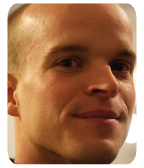
Anthony Leverrier joined the project-team SECRET at Inria, Paris in 2012. After graduating from Ecole Polytechnique, he obtained a PhD at Telecom ParisTech (France) in 2009 and did two postdocs in the group of Antonio Acin (ICFO) and Renato Renner (ETH). He is a physicist specialized in quantum cryptography, quantum error correcting codes and quantum non-locality with more than 40 publications in peer-reviewed journals, including Nature Photonics, Nature Communications, Communications in Mathematical Physics and 8 papers in Physical Review Letters or Physical Review X, as well as top computer science or cryptography conferences (FOCS, CRYPTO, EUROCRYPT). His major contribution relevant to the project is the first complete and composable security proof of continuous-variable quantum key distribution with coherent states. He also developed error-correction strategies to improve the postprocessing of such protocols, both for Gaussian and QPSK modulations.Click here to add your own text

Mellanox Technologies (MLNX) contribute to technical activities in WP 2, 3, 4, 5, 7 and 10. MLNX is a supplier of end-to-end InfiniBand and Ethernet interconnect solutions and services for servers and storage. Mellanox offers a choice of interconnect products: adapters, switches, software, cables and silicon for a range of markets including computing, enterprise Data centers, Web 2.0, Cloud, Storage and financial services. Mellanox’ top notch equipment is preferred among HPC cluster managers: Mellanox connects 39% of TOP500 systems (192 systems) as well as all of 25G, 40G and 100G Eth. systems in the TOP500 list. MLNX accelerates 2 of the TOP5 supercomputers. The company has over 2900 employees globally and 2/3 of its global workforce is hosted in Israel, with a significant portion (~1500) conducting research and development. Mellanox has several R&D centers in Europe with main HQ being in Denmark, Netherland, UK, Czech Republic and Sweden.
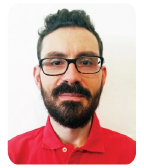
Paraskevas Bakopoulos received his Diploma and Ph.D degrees from the National Technical University of Athens (NTUA), Greece. He worked for 14 years as a researcher and senior researcher at NTUA and since August 2017 he is a senior staff engineer at Mellanox Technologies. His research interests focus on optical interconnects and optical switching in datacenter networks. He has authored or co-authored more than 110 peer-reviewed articles and conference papers and holds 2 patents. He is actively involved in several European projects and has participated in technical program committees of photonics-related events.
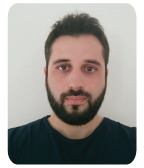
Ioannis Patronas received his Diploma in Physics and his M.Sc. In “Control and Computing” from the National and Kapodistrian University of Athens. His Ph.D. dissertation is currently under preparation. He has worked in European and Greek research projects and has authored or co-authored publications in per-reviewed journals and conferences. His main research interests focus on optical switching, parallel architectures and algorithms and real time systems.
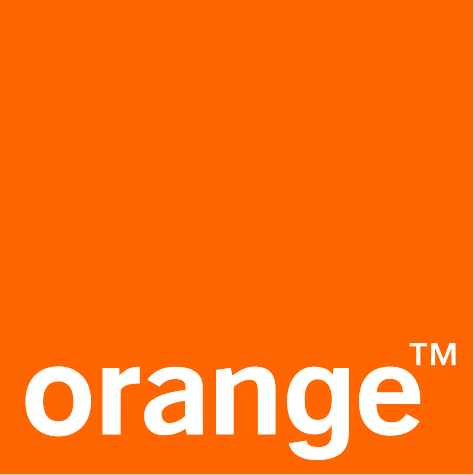
Orange will contribute to several technical activities in the project (WP2, 3, 6, 7, 9, 10 and 11). Orange is one of the world’s leading telecommunications operators with sales of 40.9 billion euros in 2016 and 152,000 employees worldwide at 30 September 2017, including 93,000 employees in France. Present in 29 countries, the Group has a total customer base of 269 million customers worldwide at 30 September 2017, including 208 million mobile customers and 19 million fixed broadband customers. Orange is also a leading provider of global IT and telecommunication services to multinational companies, under the brand Orange Business Services. In March 2015, Orange presented its new strategic plan « Essentiels2020 ». Orange has set itself a strong, demanding and unique ambition for this strategic plan: ensure that the digital revolution becomes a human revolution which is fully incorporated in our daily lives, available to all and adapted to each person’s needs.

Sébastien Canard, is a research engineer at the R&D department of the Orange Group. His main specialty is the security of the services. He is specialized on cryptography for the privacy protection and the anonymity of users in their telecommunication services. He holds an engineer qualification, a PhD and has obtained his Habilitation Thesis (HDR) on Cryptography from the University of Caen. He has published more than 30 papers in (peer-reviewed) international journals and conferences and holds about 20 patents on cryptographic protocols and their direct applications. He has managed several PhD students on cryptographic tools for privacy protection.

Naveena Genay received a Ph.D. degree from the University of Montpellier in 1999. In 1996, she joined the Orange Labs in Lannion to do research work on components for optical access network. In 2000, she joined Corvis Algety France, a start-up from Orange Labs (France Telecom R&D) which supply optical equipment for long-haul at high bit rates. She has contributed on product development for 10 Gbit/s WDM transmission systems. Since 2004, she joined Orange Labs where she is presently engaged in research on the next generation optical access network. Her main activities include migration scenarios for the upgrade of present solutions based on Gigabit PON technology. She has been in charge of French Projects on next generation optical access such as EPOD (ANR) and TRILOB (DGCIS). She was also involved in GOLD project (Celtic) focused on hybrid optical and copper architecture (FTTdp: Fiber To The distribution point) relying on enhanced data rate over twisted copper pair using G.fast technology. She is at present conducting research studies on very high data rate targeting beyond 50Gbit/s for the optical access network.

Erwan Pincemin graduated from Ecole Supérieure d’Optique (SupOptique), Orsay, France and from Université Paris XI, Orsay, France in “Optics and Photonics” both in 1996. In 1997, he joined Alcatel Alsthom Recherche, Marcoussis, France where he worked on dispersion-managed soliton propagation and optical regeneration for 40 Gbps WDM submarine transmission systems. In 2000, he is enrolled by France Telecom R&D, Lannion, France where he worked on high-speed optical terrestrial transmission systems at 10 Gbps, 40 Gbps and beyond. He participated to several European collaborative projects (NOBEL I & II, e-Photon-One …). More recently, in Orange Labs, Lannion, France, he is in charge of research on 100 Gbps and beyond optical transmissions, including advanced modulation format, coherent detection, digital mitigation of fiber impairments, and has also some key contributions on flexible optical networking, in particular through his participation to the European FOX-C and CELTIC SASER consortia. Recently as well, he starts working on quantum communications through his participation to the European H2020 Flagship CiViQ project. He is currently involved in OpenROADM and ITU-T standardization process through his activities on interworking of 100 Gbps and beyond optical interfaces in the Study Group 15 Question 6 and Question 11. He is author and co-author of more than 130 journal and conference papers and 28 patents. Erwan Pincemin served as member and sub-committee chair of the Conference on Lasers and Electro-Optics (CLEO) Europe from 2011 to 2017 and participated from 2007 to 2010 and again since 2017 to the technical program committee of the Optical Fibre Communications Conference (OFC).

Paulette Gavignet, joined Orange Labs (Lannion) in 1998, where she was involved in the evaluation and validation of WDM long haul terrestrial transmission systems especially on engineering rules. Previously she was employed for 7 years in the R&D teams of Alcatel (now Nokia) where she worked on switching and routing. Since 2009, she has been working on sub-wavelength photonic switching solutions through the implementation of several test-beds: i.e. Labelled Optical Burst Switching (L-OBS) in the collaborative French project Ecoframe and more recently Time-domain Wavelength Interleaved Networking (TWIN) in the European Celtic-Plus project SASER-SaveNet. The research projects she has been currently involved in concern sub-wavelength photonic switching, using both time and spectral domains (she proposed the TISA (TIme and Spectral optical Aggregation) solution), for future networks including control plane for efficient and intelligent optical networks. She is author and co-author of more than 40 national or international papers or communications as well as 9 patents.

Telefónica I+D (TID) is the innovation company of the Telefónica Group. Founded in 1988. It contributes to the Group’s competitiveness and modernity through technological innovation. To achieve this aim the company applies new ideas, concepts and practices in addition to developing advanced products and services, It is the largest private R&D centre in Spain as regards activity and resources, and is the most active company in Europe in terms of European research projects in the ICT sector. Over the last few years, within the global market TID has grown to become a network of centres of technological excellence that stretches far beyond the Spanish borders. At the same time, it is working for the companies in the Telefónica Group in the rest of Europe, America and Asia. In addition to the numerous technical awards it has won since its foundation, the company received the Principe Felipe Award for Business Excellence in 2002. TID staff has a long experience in new network architectures and is involved in several internal initiatives and collaboration projects related to them. The team also has a long experience in participating and contributing to standards organisations and open source initiatives, currently reflected by the instrumental position played in the creation and the leadership in the ETSI NFV ISG, the ETSI OSM OSG, and the position of the TID staff within the Open Daylight project. Finally, our direct connection with a global organization providing Internet services at all levels will ease the collection of knowledge from additional experts, as well as the assessment and evaluation of results in (next-to) real environments.
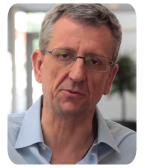
Diego R. López joined Telefonica I+D in 2011 as a Senior Technology Expert on network middleware and services. He is currently in charge of the Technology Exploration activities within the GCTO Unit of Telefónica I+D. Before joining Telefónica he spent some years in the academic sector, dedicated to research on network service abstractions and the development of APIs based on them. During this period, he was appointed as member of the High-level Expert Group on Scientific Data Infrastructures by the European Commission. Diego is currently focused on identifying and evaluating new opportunities in technologies applicable to network infrastructures, and the coordination of national and international collaboration activities. His current interests are related to network virtualization, infrastructural services, network management, new network architectures, and network security. He chairs the ETSI ISG on Network Function Virtualization, and has published more than 100 papers and supervised several PhD theses on the matters related to Software Networks, network security and network middleware. Apart from this, Diego is a more than acceptable Iberian ham carver, and extremely fond of seeking and enjoying comics, and good discussions on any (in)appropriate matter.
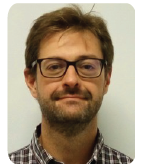
Antonio Pastor-Perales is a security expert for the network virtualization unit at the Global CTIO Unit, within Telefónica I+D. He joined Telefónica I+D in 1999 where he worked on design and deployment and support engineering of different worldwide Telefónica networks. Since 2006 he has been working as an expert in network security, and recently he is working in SDN and NFV technologies oriented to security and network where he is co-author of several patent and has several more filed. He also holds several security certifications from ISACA and GIA and published several papers.
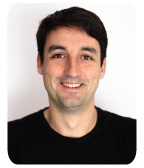
Víctor López received the M.Sc. degree in telecommunications engineering from Universidad de Alcalá de Henares, in 2005 and the Ph.D. degree in computer science and telecommunications engineering from Universidad Autónoma de Madrid (UAM) in 2009. In 2004, he joined Telefónica I+D as a Researcher, where he was involved in next generation networks projects for metro, core, and access (NOBEL, MUSE, MUPBED). In 2006, he joined the High-Performance Computing and Networking Research Group (UAM) as a Researcher in the ePhoton/One+ Network of Excellence. He worked as an Assistant Professor at UAM (2009), where he was involved in optical metro-core projects (BONE, MAINS). In 2011, he joined Telefonica I+D as Technology specialist. He has co-authored more than 100 publications and contributed to IETF drafts. His research interests include the integration of Internet services over IP/MPLS and optical networks and control plane technologies (PCE, SDN, GMPLS).
Nextworks s.r.l., located in Pisa (Italy), is a dynamic R&D SME that was created in 2002 as a spin-off company of the Computer Science and Telecommunications Division of the Consorzio Pisa Ricerche (CPR–DITEL). Nextworks was created by a group of engineers and computer scientists who gained high experience in National and International research projects and industrial consultancies since 1995. Nextworks operates in the ICT sector, collaborating with some of the major European manufacturers and operators (e.g., Alcatel-Lucent, Ericsson, Wind, Interoute). The company’s team boasts long-term experience and proved skills in the frameworks of Control Plane technologies for wired and wireless transport networks, design and development of complex software on both traditional and embedded platforms and in Quality of Service (QoS) in packet networks, IP telephony, digital video encoding and streaming. The specific nature and technical position of these activities require a leading-edge, up-to-date know-how and technical expertise. In order to fulfil this requirement, Nextworks participates actively in EU-funded research projects (within H2020, FP7 and FP6), cooperating with both academic and industrial partners, as an important and preferential investment to develop and update know-how on selected topics. Nextworks has a solid background on design, development and integration of full networking protocol and SDN/NFV stacks. Nextworks research team features high expertise and know-how in design and implementation of SDN architectures and controllers, NFV MANO components, service composition frameworks, and joint cloud+network resource orchestration architectures, with hands-on experience with OpenDaylight and ONOS, Openstack (with main focus on Neutron, Heat and Ceilometer modules), OpenBaton, Open Source Mano.
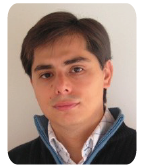
Gino Carrozzo holds an Italian Laurea degree “cum laude” in Electronic Engineering and a Ph.D. in Telecommunications Networks, both from the University of Pisa. He has 18+ years’ experience in telecommunication networks, with special focus on control plane architectures and protocols: 5G, SDN/NFV/MEC, GMPLS/ASON, MPLS-TP. These skills matured through the active participation in industrial projects with some of the major networking companies (Ericsson, Nokia/Alcatel-Lucent, Siemens, Italtel), consultancies for network operators (GTT, WindTre) and R&D projects with leading Telco industries and renowned universities and research centres. At Nextworks, an Italian R&D SME, Gino currently holds the position of Deputy Head of R&D and leads a team of 15 researches involved in various industrial contracts and projects co-funded by the EC under various ICT programs. His research activities are currently focused on 5G, SDN/NFV, with an emphasis on network slicing, end-to-end 5G network, 5G KPI validation, NFV Orchestration with ETSI OSM, MEC and various 5G use cases network and media verticals (e.g. UHD distribution over virtual CDNs).
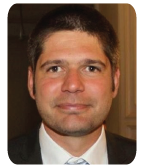
Giacomo Bernini received the Italian Laurea degree in Telecommunication Engineering from the University of Pisa, Italy, in 2006. In 2007 he worked as network systems consultant and contributed to the development of a wholesale order management platform for Vodafone Italy. Currently he is R&D Technical Coordinator at Nextworks, and his research interests include SDN, NFV, 5G network slicing and orchestration. He participated to design, development and demonstration activities in several FP6, FP7 and H2020 projects (PHOSPHORUS, GEYSERS, ETICS, MAINS, CONTENT, TRILOGY 2, PACE, LIGHTNESS, MONROE, ORCHESTRA, SELFNET), as well as to industrial projects on WSON GMPLS, Multi-Layer PCE, and NFV technologies among the others. He is currently active, beyond CiViQ, in the H2020 5G-EVE, SLICENET and 5G-MEDIA projects, and he is contributing in ETSI NFV as leader of the Specialist Task Forces on NFV API conformance test specification (STF 557) and OpenAPI specification for NFV (STF 563).
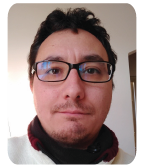
Pietro G. Giardina, received the Italian Master’s Degree in Computer Engineering from University of Pisa in 2013. From 2013 to early 2016 he worked as research assistant at Italian National Research Council (CNR) focusing his research and development activity on Internet topology discovering and monitoring (Isolario Project and Portolan Project). Currently he works as software engineer in R&D department at Nextworks. His research interests are mainly focused on SDN/NFV, OpenFlow, Netconf and containerized applications. He participated several H2020 projects (ORCHESTRA, MONROE, SELFNET) and he is currently active in SLICENET, QAMeleon and CiViQ projects.

Deutsche Telekom AG is a German telecommunications company headquartered in Bonn and by revenue the largest telecommunications provider in Europe. Deutsche Telekom was formed in 1996, as the former state-owned monopoly Deutsche Bundespost was privatised. The company operates several subsidiaries worldwide, including the mobile communications brand T-Mobile.
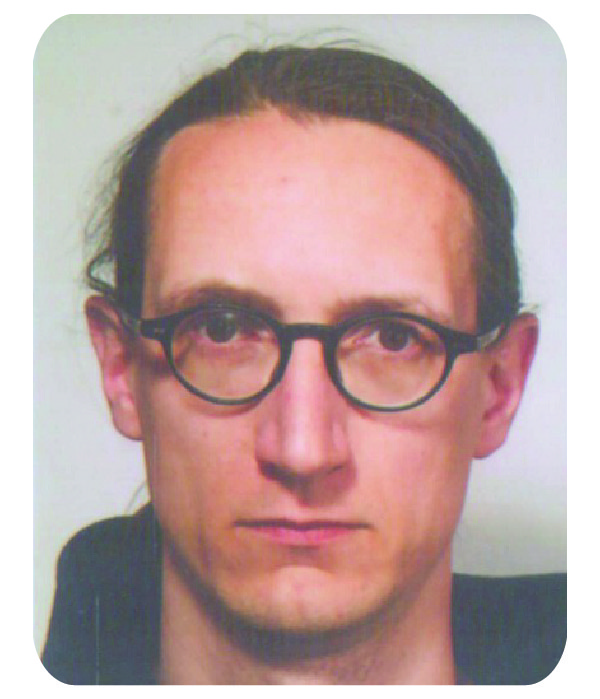
Felix Wissel holds a PhD in Theoretical Physics. He is in the engineering department of Deutsche Telekom Technik GmbH which he joined in 2014 as senior expert for network concepts and architectures. Before, he was in-house consultant at T-Systems International GmbH and as such is with DT since 2011. He participated in international projects for ESA and EU (e.g. IDEALIST) and now focuses on IP-optical integration, SDN solutions and latest developments in transport technologies and security. He is interested in mathematics, topology and network design challenges.
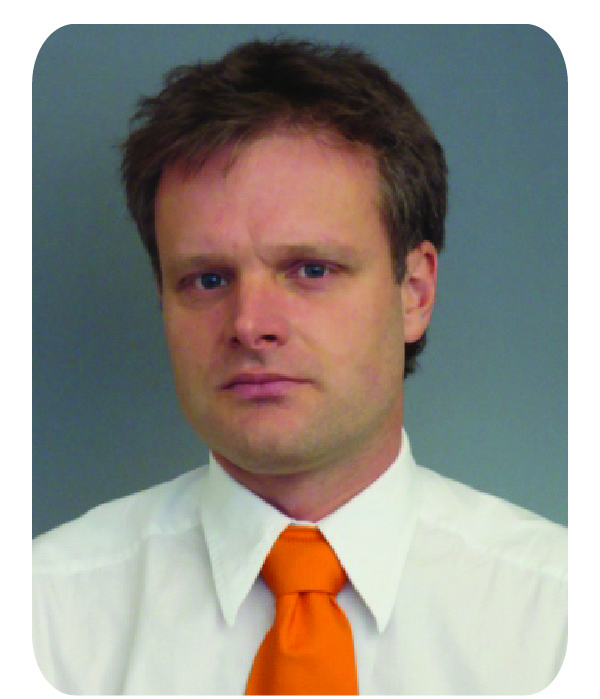
Matthias Gunkel is a Senior Network Architect within Deutsche Telekom group in Darmstadt, Germany. He received his PhD in telecommunications from Darmstadt Technical University, Germany, in 1997. Since 1999 he is with Deutsche Telekom, where he was initially responsible for high-speed high-capacity transmission systems. He studied transparent network principles and was involved in IST projects like NOBEL, NOBEL-II, DICONET and STRONGEST. Matthias was responsible for DT’s contribution to IDEALIST and led DT-internal strategic investigations on “IP plus Optical” architectures dealing with practical multilayer networks consisting in an optimized integration of the packet layer with the optical layer. Currently Matthias is involved in the specification of an SDN-based automation solution for DT’s multi-layer core network. He has published numerous conference papers and issued patents in this field.
